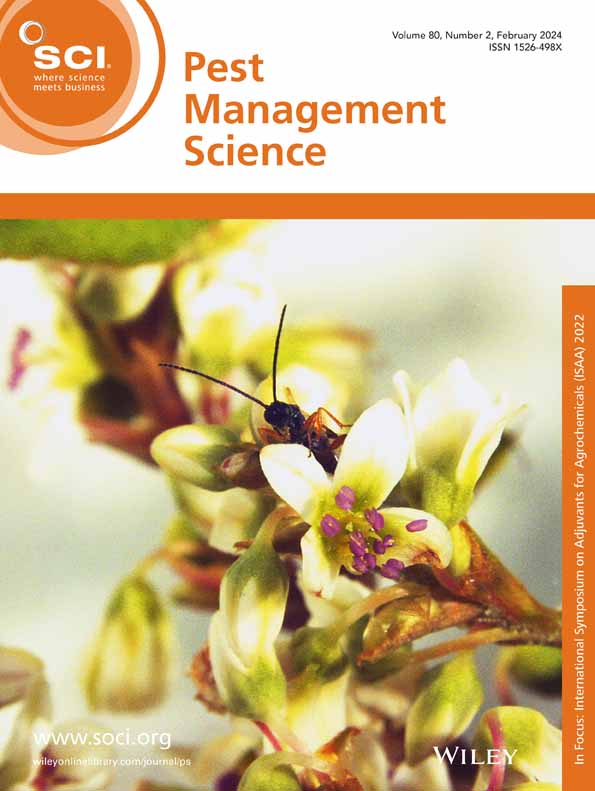农业中的RNAi革命:解锁机制,克服交付挑战,推进可持续虫害防治。
IF 3.8
1区 农林科学
Q1 AGRONOMY
引用次数: 0
摘要
RNA干扰(RNAi)是一种有效的基因沉默技术,可用于农业可持续作物生产,以应对日益增长的全球粮食挑战。尽管在植物中使用RNAi具有潜力,但RNAi的递送仍然是一个重大挑战,这导致了有效控制害虫的新策略的应用和发展。在这篇综述中,我们探讨了RNAi的机制,重点讨论了双链RNA (dsRNA)、小干扰RNA (sirna)和其他参与基因沉默的关键蛋白的作用。RNA依赖性RNA聚合酶(RdRPs)对真核细胞(包括害虫和病原体)中RNAi的系统性传播的贡献也得到了强调。我们研究了转基因植物的发展和转化,同时承认围绕使用转基因生物(GMOs)的伦理,政治和法律问题。此外,最近在dsRNA递送方面的创新,包括基于纳米颗粒的载体和害虫防治的局部应用,已经回顾了最新文献的支持证据。我们总结了这种机制对可持续农业生产的重要性,并提出了改进RNAi传递系统的一些未来方向。©2025化学工业协会。本文章由计算机程序翻译,如有差异,请以英文原文为准。
RNAi revolution in agriculture: unlocking mechanisms, overcoming delivery challenges, and advancing sustainable Pest control.
RNA interference (RNAi) is an effective gene silencing technique that can be used for sustainable crop production in agriculture for meeting the growing global food challenges. Despite the potential of using RNAi in plants, the delivery of RNAi remains a significant challenge that has resulted in application and development of novel strategies in an effort for effective pest control. In this review, we explore the mechanism of RNAi, focusing on the roles of double-stranded RNA (dsRNA), small interfering RNAs (siRNAs), and other key proteins involved in gene silencing. The contribution of RNA-dependent RNA polymerases (RdRPs) to the systemic spread of RNAi in eukaryotic cells, including pests and pathogens, is also highlighted. We examine the development and transformation of transgenic plants, while acknowledging the ethical, political, and legal concerns surrounding the use of genetically modified organisms (GMOs). Furthermore, recent innovations in dsRNA delivery including nanoparticle-based carriers and topical applications for pest control have been reviewed with supporting evidence from the latest literature. We have concluded the importance of this mechanism for sustainable agriculture production and suggested some future directions for improving RNAi delivery systems. © 2025 Society of Chemical Industry.
求助全文
通过发布文献求助,成功后即可免费获取论文全文。
去求助
来源期刊

Pest Management Science
农林科学-昆虫学
CiteScore
7.90
自引率
9.80%
发文量
553
审稿时长
4.8 months
期刊介绍:
Pest Management Science is the international journal of research and development in crop protection and pest control. Since its launch in 1970, the journal has become the premier forum for papers on the discovery, application, and impact on the environment of products and strategies designed for pest management.
Published for SCI by John Wiley & Sons Ltd.
 求助内容:
求助内容: 应助结果提醒方式:
应助结果提醒方式:


